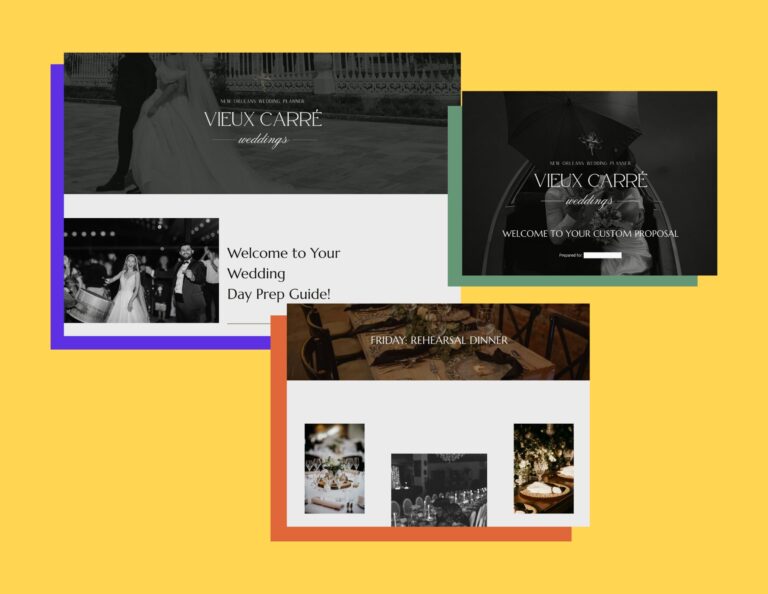Cohesive branding online as well as in your client interactions is how you can stand out and continue generating new business. Use these six tips to create a strong, consistent brand that reflects your business mission!

Everyone seems to have their own idea of what cohesive branding includes, but what exactly is branding?
Branding is your business’s complete image, which conveys an overall feeling and message to your audience. As someone who spends their time helping entrepreneurs find their brand story and messaging before they pivot, I’ve seen firsthand how many business owners toss branding into the “I’ll get to that later” pile.
But whether you know it or not, you already have a brand.
Before your customer ever buys from you, they see your brand in some shape or form. Every newsletter you’ve sent, every photo shared on Instagram, every tweet—these interactions probably seem small and unrelated, but they all collectively form your relationship with your audience. And these relationships are what define your brand.
This means that your brand is already alive, but it might not be consistent. With a strong brand, you can make sure you aren’t losing clients by sending the wrong message. Instead, successful branding can help expand your customer base by informing leads about how they can expect to work with you.
Let’s dive into the six keys to creating a cohesive brand that attracts buyers and creates believers!
Learn How to Create a Unique Brand
Get more tips on building a brand, like creating an authentic identity and leveraging social media.
Download the Free Guide1. Identify your audience
Whether you’re rebranding or starting a business, think about how people perceive your brand right now. Ask yourself whether the message you’re delivering can be clearly understood and if it’s reaching your ideal customers.
Start by conducting an analysis of your target audience. Who are the people who typically have the problem you solve? What challenges are they facing? What solutions do they want? If you find yourself struggling with the answers, talk to them to find out what they’re actually saying.
I tell my clients that the best brands are built on empathy. Once you’ve taken the time to understand your audience, you’ll find it infinitely easier to build a brand that resonates with them.
2. Define your brand story
A logo may make a great first impression. But your brand is the story that customers will tell themselves and each other when you’re not in the room.
Nike is a great example. From the “Just Do It” tagline to their assertion that “if you have a body, you ARE an athlete”, the Nike brand is rooted in inspiration, innovation, and inclusion. It invites people to take part. And this brand story has been consistent since the beginning.
The first step is sharing an origin story that will set you apart from your competitors. Why did you create this business? What path led you to what you do today? What kind of impact do you hope to make?
Then, break it down into sections. Be sure to cover your brand’s history, how it has evolved, your goals for the future, key products or services, what you stand for, and your values and beliefs.
Your brand story will inform and influence everything from social media posts to media features to your website copy.

3. Make your website look professional
When people visit your website, they’re looking for information to determine if they like and trust you enough to invest in you. Before they even begin to read the content, it only takes 20 seconds for someone to decide whether they’ll stay or leave your site.
From the user experience to the aesthetics, it all plays a part in assessing your professionalism. Prospective clients are looking for a website that’s easy to use so they can easily find the information they’re looking for.
So invest in that photoshoot. Hire a web designer or buy an easy-to-use theme. Create a logo you can start using with a logo maker like Looka. Determine where you need help, and then delegate. Try to choose the best creative professional for your budget and needs.
4. Use consistent colors and design elements
Remember, your brand doesn’t just live on your website—it’s everywhere your customers can find you. So, establish a visual brand that aligns with your overall story.
For inspiration, browse Pinterest to find a color palette you can start using. Find 3-4 fonts that are easy to read, and stick to them. When you find a designer you love, they’ll help you translate everything into a solid brand identity. But before they can put in work, it’s up to you to determine the overall aesthetic that best represents you.
A cohesive brand isn’t just visually appealing. It helps you build a business that potential customers find trustworthy and memorable.
By using your brand elements (your colors, logo, images, etc.) with intention, you highlight your professionalism. And you give your audience a glimpse of what they’ll experience when working with you.
5. Have a clear, recognizable voice
You can’t tell your brand story without words, so get absolutely clear on your voice. And make sure it’s consistent with the overall story and image you want to portray.
If your brand was a person, how would you describe its personality to someone in three words? Peppy head cheerleader? Direct and no-nonsense? Witty and profane? Your answer will depend on your market and target audience.
Once you’ve decided on your brand voice, create a guide for your content (written and visual). Establish dos, don’ts, and clear parameters. As your brand evolves or your audience changes, take a look at this brand voice guide and update it accordingly.
Just like your visual brand identity, you should also use your brand voice throughout all your channels, including digital marketing campaigns, email marketing, social media posts, and print collateral.
6. Extend a cohesive brand identity into your client experience
You might feel like you’ve successfully developed your brand after it’s visually appealing, but you can’t forget one key piece – your client experience.
Once clients book with you, your overall branding should still play a part. Imagine if the brand you portrayed was vibrant and energetic online, but all the files and communication you sent out were plain and boring. There’s nothing wrong with a plain brand, but the point is that consistency is key all the way through.
Inconsistency in your client experience can make your clients feel like you aren’t meeting up to the expectations you communicated through your brand. With a strong brand presence throughout the duration of your projects, you can create a lasting impression that helps encourage repeat business and referrals.
Incorporate cohesive branding in your client experience by developing brochure templates, proposals, welcome packets, and other files that incorporate your voice and identity. You can use HoneyBook to set up all of these templates and more that always use your company branding. That means more consistency for your clients and time saved!
Create a cohesive brand throughout your client experience
Try HoneyBook for FreeUnderstand and optimize your brand for consistency
Whether you decide to tweak your brand yourself or hire a professional, remember that consistency and cohesiveness are the keys to branding success.
Your business needs to stand for something to set it apart from the pack. Your brand needs a story for your customers to believe in so they will buy into what you’re selling.
What’s more, understanding your brand means that you control how people experience your business—which can help you attract more of the right kind of customers.
So take a step back and examine your brand. Make sure that it tells the story you want it to—and that it’s telling it clearly and consistently. Once you’ve done that, make sure you are running every other aspect of your business smoothly with HoneyBook’s client management software for small businesses.



